How to calculate the number of sections of aluminum
Aluminum heating radiators have gained wide popularity among buyers due to a number of advantages, but in order for the room to be heated as efficiently as possible, it is necessary to carry out a competent calculation of the required heat output in order to determine how many sections should be in the radiator. In this process there is nothing difficult, the main thing is to prevent miscalculations and take into account all the important nuances, all this will be discussed in this article.
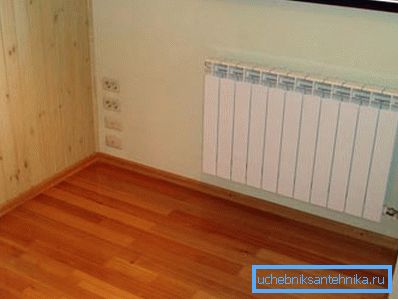
Pros and cons of this option
To begin with, we will look at how aluminum differs from other options. It is important that this material fits into your system, otherwise communications will break down in a short time. Let's start with the positive factors:
| Excellent heat dissipation | This is one of the most effective options, which allows you to heat the room very quickly, about half of the heat is emitted by radiation, and convection gives the same amount. Energy efficiency will be very high, so the cost of heating will decrease, especially if you had old cast-iron products before. |
| Light weight | This factor also needs to be touched upon, since it makes the installation of radiators with your own hands much easier, and the load on the walls is reduced. No need to use massive brackets and be drilled very deeply, due to low weight the design can be more simple |
| Adjustment accuracy | Due to the low thermal inertia, you can very accurately regulate the temperature in the room, and it will always be kept at the set level. The most important thing is to put high-quality adjusting units, it is better if these are electronic versions that allow you to set indicators by the time of day and days of the week. |
| Democratic value | The low price is one of the main advantages of this option, since the products are available to a wide range of buyers. It should be noted that you should not buy the cheapest radiators, as their quality often causes a lot of questions |
Note! It is best to purchase products of well-known manufacturers, the quality of which is well known to customers and specialists. But even if you have to buy products of a brand with which you are not familiar, the easiest way to check will be weighing, the section should weigh more than 1 kg, and in general the principle “the more the better” is true, the top products can weigh up to one and a half kilogram.
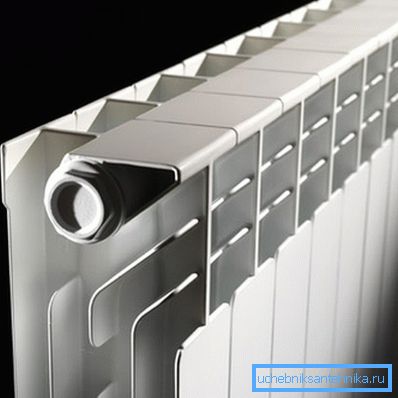
Now let's talk about the shortcomings of the product:
- Requirements to the quality of the coolant - increased acidity, the presence of solid particles can damage the internal structure of the sections and cause corrosion. Therefore, the fluid in the system should be clean with a pH of no more than 7-8, only this way you can guarantee the durability of the heating elements.
- The maximum pressure in the system should not exceed 16 atmospheres, in fact, this is sufficient for most systems, but with hydraulic shocks that occur in centralized communications, radiators can fail.
- Aluminum elements can not be combined with copper, as in this place will be a violent corrosion process that can destroy the material in just a year.
Based on the foregoing, it can be concluded that aluminum products are excellent for private building with an individual heating system, in apartment buildings it is better not to use them, since there are likely to be questions about the quality of the heat carrier and the pressure in the system.
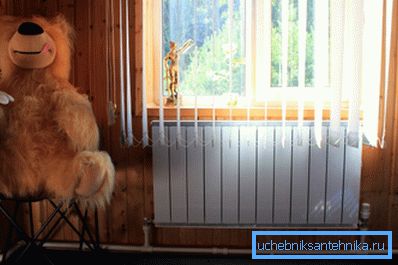
Features of the estimated work
The calculation of the number of sections of aluminum radiators is a responsible process, so pay close attention to this issue, it is important to take into account all the factors so that the result will correspond to reality to the maximum.
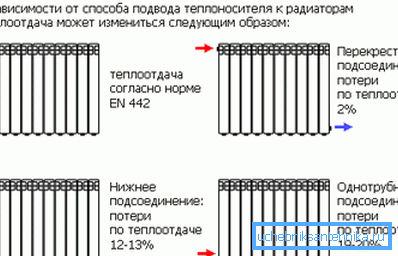
Important factors
First of all, you need to deal with a number of nuances, since it is impossible to accurately calculate the number of sections of an aluminum radiator without taking them into account, consider the most important and significant:
- Features of your region, here, first of all, it is necessary to take into account the length of the cold period of the year, the lowest temperatures in the season, and the predominant wind direction. It is no secret that in the south you need much less heating costs than in the northern areas, so it is important to do the calculation for your place of residence.
- Quality insulation structures - the better it is, the less heat loss there will be and the less heat energy will be needed for heating. The diagram below shows how much heat is lost in buildings without additional thermal insulation, but if you insulate all surfaces and install energy-saving double-glazed windows, the figures will decrease by half or even three times.

- The number of exterior walls is also taken into account. indoors, if there are two of them, then it is necessary to add another 25-30% to the power of the radiators. Each window increases the heat consumption by about 10% (new energy-saving structures by 5%).
- Rooms with windows facing north and northeast lose more heat. Therefore, it is necessary to add to the result of calculations 10% to compensate for heat losses.
- It should be remembered that the location of the radiator in a niche reduces its heat transfer by 5-10%, depending on the depth, you should not put too wide window sills, as they violate the process of convection and significantly reduce the efficiency of radiators.

Another important nuance is the presence of a screen on the radiator, depending on the type of construction, heat transfer can decrease very noticeably, losses sometimes amount to 15%, therefore it is better not to close the radiator fins with any extraneous elements.
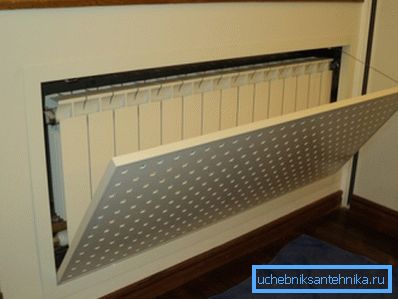
Design work
On many resources, it is recommended to calculate the number of sections of the aluminum radiator by area, but this option is not very accurate, it is much more efficient to calculate the volume, the instructions for the work are as follows:
- To begin with, the length, width and height are measured, the obtained figures in meters are multiplied together, the volume of the room in cubic meters is obtained.
Note! According to the norms of SNiP, 41 watts of thermal energy is required per cubic meter of conventional space, for insulated variants this figure is 34 watts, and it is from these values that one should proceed when working.
- Suppose we have a 3x5 room with a ceiling height of 3 meters, count the volume, we get 45 m3, multiply this figure by 41, we get 1845 W, if rounded, it will be 1.9 kW.
- That's not all, now according to the documents on the products we are looking at the heat transfer of one section, let's say it is 180 watts at a coolant temperature of 90 degrees. And if you most often have a temperature of 60 degrees, then the actual heat transfer rate will be less than one and a half times and will be 120 watts - this is a more realistic picture.
- Now, the calculation of sections of aluminum radiators is made: 1845 watts divided by 120, taking into account the rounding we get 16 sections, if there are two windows, you can add two more units, and it is advisable to throw at least two more elements on the poorly warmed walls. As a result, we get two radiators of 10 sections, which are best placed under the windows.
If you carry out the calculations correctly, then there is no need to worry about the heat in the house, you have an adequate supply of power, and when the system reaches its maximum performance, even the lowest temperatures will overdo it.
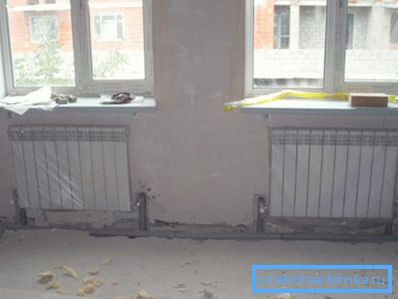
Conclusion
It’s not so difficult to calculate how many sections it is necessary for one or another room, and if you doubt the result, add a margin of 20-30% of power, it won’t be worse, especially since the thermostat adjusts the temperature. The video in this article will help to understand some of the important features in more detail.